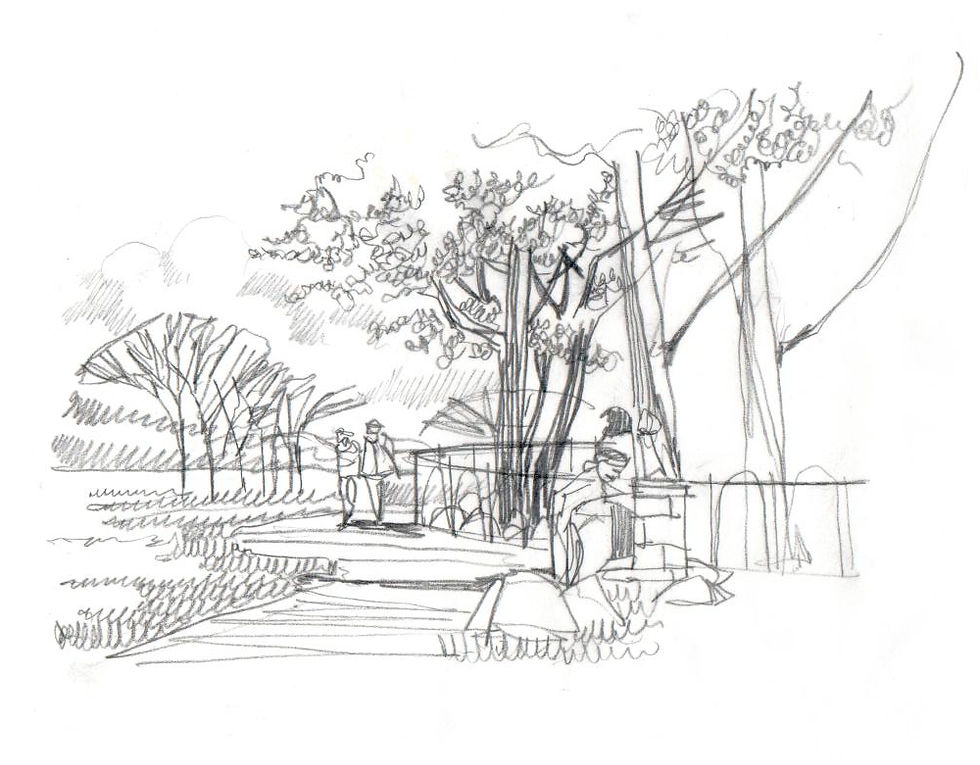
Urban Forest Networks
Natural Systems Research

Monument Tree

Tree Family

Canopy Cover

Network
A New Approach to Conservation
Purpose
Building Conservation Networks
Environmental Artwork

Hamilton
Building Conservation Networks is a research-based installation project created by Lesia Mokrycke to raise awareness about the degradation of the urban forest, to illuminate relationships between water and terrestrial ecosystems, and to connect living trees with human experience. The project underscores the key message that protecting ancient trees in urban areas and restoring habitat can significantly decrease carbon emissions and safeguard the planet.
This creative urban design and public art project identifies historic, monumental trees as key anchors in the ecological and cultural life of the city. Landmark, Monument trees contain information that give us clues about times past and can foster stronger and more resilient urban forests.

Resources
Hamilton
Present

Environmental Artwork
Strategy
This large-scale art and urban design project presents a strategy for restoration that re-imagines conservation as a series of networks that enhance the urban forest. Through mapping the location of these pre-settlement trees across the city, The Urban Forest Lab is laying the groundwork to create ecological infrastructure that can withstand coming changes in the climate.




Monument Trees
Present
Environmental Artwork
Hamilton

BIG, mature trees provide critical ecological benefits in cities. Urban trees improve physical and mental health, mitigate temperature, sequester carbon, absorb water, and reduce pollution. Green space is the most important environmental asset for reducing the risk factors of climate change in urban areas.
Despite this, many trees are at risk globally due to urban development and climate change. Trees in our region, such as Northern Red Oak, are vulnerable in cities and may begin to show signs of stress as climate conditions shift.
Urban scale restoration




















Tree Technology
MONUMENT TREES are one of nature's most efficient engineering systems. For millions of years, plants have shaped our climate conditions and continue to be a part of the earth's water story. Urban trees in particular play an important role in this cycle. Our research shows a strong correlation between old trees and surface level and underground streams. Ancient, Monumental Trees are especially important in regulating the circulation of water within the earth's atmosphere in urban environments.
25% of Canada's biodiversity can be found in Hamilton. As cities expand, trees have a harder time reproducing in urban areas. Seeds play an important role in the urban ecosystem to regrow the urban forest and act as a food resource. By restoring habitat we can help urban forests regenerate and protect the planet.
Ecosystem Services include home energy savings, carbon sequestration, pollution removal and avoided runoff. Large mature trees make a higher contribution to ecosystem services compared to smaller trees.
Stewardship
Links
Click on the menu to learn about each tree species, share a story, and view the tree index. Our research is dovetailing with the local municipality to foster new and innovative approaches to conserve and enhance the urban forest. Made possible through the support of the Canada Council for the Arts.
ASSOCIATED WORKS
Hamilton City Magazine
TVO
"Beautiful, monumental, and magnificent’: Meet Hamilton’s oldest trees"
Downtown Sparrow
"What Coexisting with Urban Trees Can Teach Us About Our City"
CBC Hamilton
"Meet the woman searching for the oldest trees in Hamilton"
Hamilton's Heritage Landscapes -
Monument Trees of Hamilton - Online Exhibition
Mapping the Invisible -
How do trees propagate? In the city, it is easy to forget about the important role seeds play in the forest. Seeds are our quiet companions in the city. We rake them up, drop maple keys and watch them spin and pull them from cracks in the sidewalk when they become a nuisance.
The Learning Guide is co-produced with the Department of Tourism and Culture with the City of Hamilton and Tropos. This educational resource for local teachers will help students learn about the urban forest in Hamilton. As part of the Stewardship program established through our work at Tropos, the Learning Guide introduces the core concepts of our work to kids through a series of creative activities: identifying, collecting, and protecting.
Click on the link below to download a copy for your classroom.
Are you interested in becoming a neighbourhood forest steward? Are you passionate about the trees in your community and want to make a difference?
Give us a shout at the link below:
Author and Artist - Lesia Mokrycke
Sponsor - We acknowledge the support of the Canada Council for the Arts / Nous remercions le Conseil des arts du Canada de son soutien
Studio Assistants - Mae Garcia, Alex Li, Sophie Williams
Indigenous Specialist - Paul General, Former Head of Six Nations Eco-Centre
Special Thanks - Cathy Plotz at Hamilton Conservation Authority; Kathy Renwald with CBC Hamilton; the Hamilton Municipal Heritage Committee, City of Hamilton Culture and Heritage Department; Hamilton Culture & Tourism / Hamilton Civic Museums; McMaster University, Dept of History; CFMU; CityLAB; University of Toronto, Dept of Environment; Rebecca Rathbone; Hamilton City Magazine; Downtown AM Rotary Club of Hamilton; Our Forest; Downtown Sparrow; Justin Chandler at TVO; Hamilton Naturalists Club; Education department at RBG; Friends of Auchmar, and each member of the Hamilton community who has contributed a tree to this project.


















